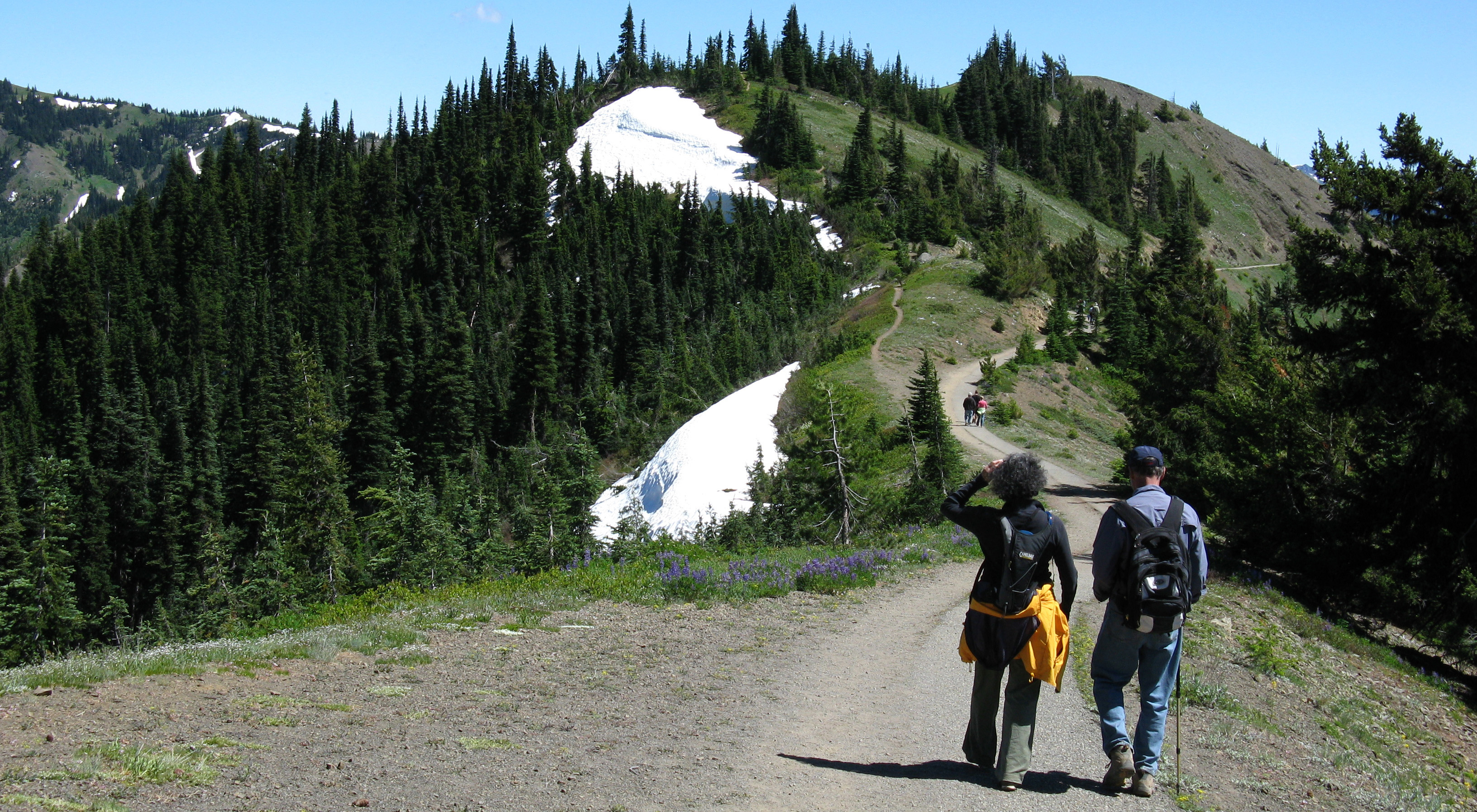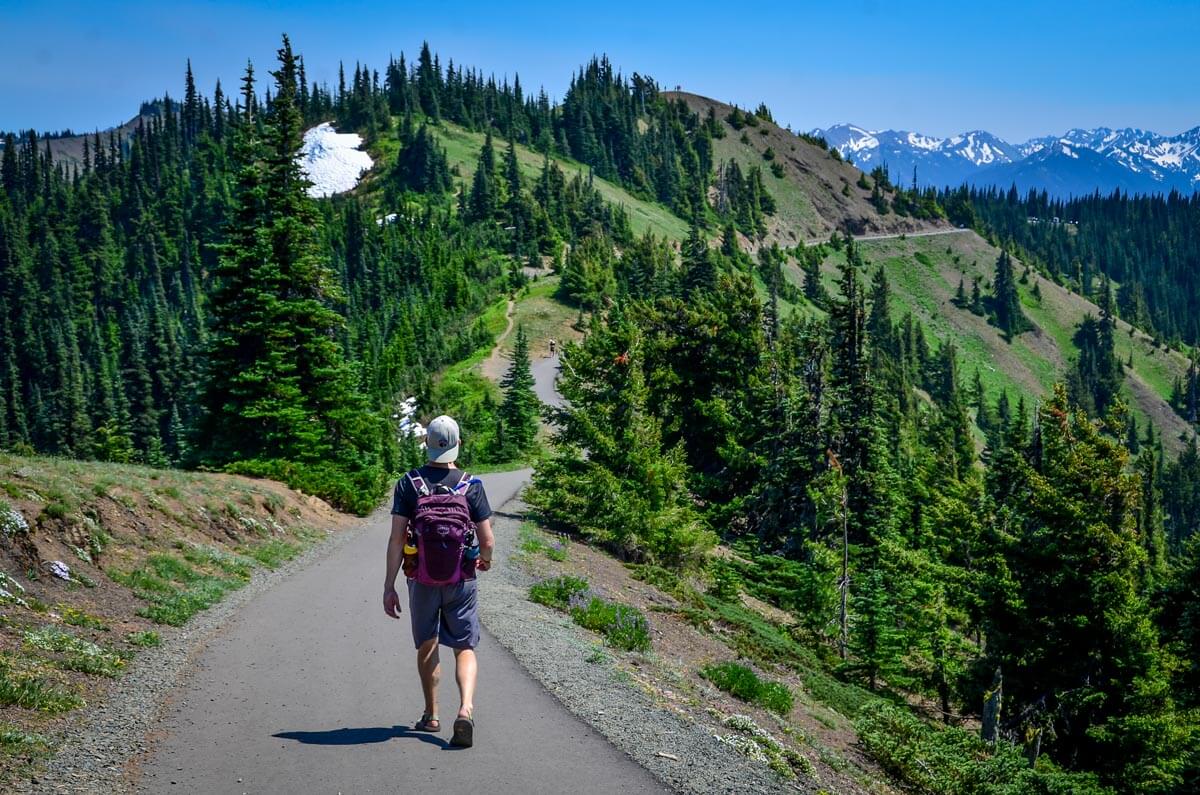Hiking the Olympic National Park offers an unparalleled adventure, encompassing diverse landscapes from lush rainforests to rugged mountains and dramatic coastlines. This guide delves into planning your trip, exploring various trails, understanding the unique ecology, and ensuring a safe and memorable experience within this stunning national park. Whether you’re a seasoned hiker or a beginner, Olympic National Park provides something for everyone, from leisurely strolls to challenging multi-day treks.
Get ready to discover hidden waterfalls, encounter incredible wildlife, and witness breathtaking vistas.
From choosing the right trail based on your experience level to understanding the necessary permits and gear, we’ll cover all the essential aspects of planning your Olympic National Park hiking adventure. We’ll also highlight responsible wildlife viewing practices and provide safety tips to ensure you have a safe and enjoyable trip. This comprehensive guide aims to empower you with the knowledge and resources to make the most of your journey through this incredible natural wonder.
Wildlife Encounters in Olympic National Park
Olympic National Park boasts a rich diversity of wildlife, offering visitors the chance to observe animals in their natural habitat. However, responsible wildlife viewing is crucial for both visitor safety and the preservation of the park’s delicate ecosystem. Understanding the animals’ behaviors and habitats, and following established safety guidelines, ensures a positive and memorable experience for everyone.
Common Wildlife Species and Their Behaviors
Olympic National Park is home to a variety of animals, each with unique characteristics and behaviors. Understanding these can significantly improve your safety and appreciation of the park’s biodiversity. The following table summarizes some of the most commonly encountered species.
| Animal | Habitat | Typical Behavior | Safety Precautions |
|---|---|---|---|
| Black Bear | Forests, meadows, coastal areas | Generally shy and avoidant of humans, but may become aggressive if threatened or surprised; active day and night. | Store food properly, make noise while hiking, carry bear spray, maintain a safe distance (at least 100 yards). |
| Roosevelt Elk | Forests, meadows, near rivers and streams | Herd animals, often found grazing; males (bulls) can be aggressive during mating season. | Observe from a distance, avoid approaching or feeding them, be aware of their unpredictable behavior, especially during rutting season. |
| River Otter | Rivers, streams, lakes, coastal areas | Playful and active; often seen swimming, foraging for food. | Observe from a distance, avoid disturbing their habitat. |
| Harbor Seal | Coastal areas, beaches | Rest on beaches and rocks, feed in the water; generally shy. | Observe from a distance, do not approach or disturb them, especially during pupping season. |
| Bald Eagle | Coastal areas, forests near water | Soaring, hunting fish; often seen perched in trees or on rocky outcrops. | Observe from a distance with binoculars or a spotting scope; do not disturb their nests. |
Responsible Wildlife Viewing Practices
Maintaining a safe distance from wildlife is paramount. Never approach or feed animals. Feeding wildlife alters their natural behavior, making them dependent on humans and potentially leading to dangerous encounters. Remember that you are a visitor in their home. Your presence should have minimal impact on their lives.
Always carry bear spray and know how to use it. Make noise while hiking, especially in areas with dense vegetation, to avoid surprising animals. Observe animals from a distance using binoculars or a spotting scope for a better viewing experience without disturbing them.
Example Wildlife Encounter: Black Bear on the Trail
Imagine you’re hiking a trail in Olympic National Park and round a bend to encounter a black bear foraging for food. The bear is about 50 yards away, seemingly unaware of your presence. It’s actively sniffing the ground, possibly looking for berries or insects. Appropriate Response: Immediately stop and slowly back away. Do not make sudden movements or run, as this could startle the bear and trigger a defensive reaction.
Speak calmly and firmly, letting the bear know you are there. Maintain eye contact but avoid staring intensely. If the bear approaches, slowly raise your arms to appear larger and make yourself look imposing. If the bear continues to approach or shows signs of aggression, deploy your bear spray according to its instructions. If possible, slowly retreat to a safe distance, keeping the bear in sight.
Finish your research with information from minnesota hiking trails.
Once you have safely retreated, report the encounter to park rangers.
Safety and Preparedness for Hiking in Olympic National Park

Hiking in Olympic National Park offers unparalleled beauty, but its diverse and sometimes unpredictable environment demands careful preparation. Understanding the potential challenges and taking proactive steps to ensure safety is crucial for a rewarding and risk-free experience. This section Artikels essential safety measures and preparedness strategies for navigating the park’s varied terrains and weather conditions.
Preparing for Variable Weather Conditions
Olympic National Park’s weather can change dramatically in short periods. Rain is frequent, particularly in the western regions, and fog can roll in quickly, reducing visibility significantly. High elevations can experience snow even during summer months. To prepare, always check the forecast before your hike and pack layers of clothing appropriate for a wide range of temperatures and conditions.
This includes waterproof and windproof outerwear, warm insulating layers (fleece or down), quick-drying base layers, and sturdy hiking boots with good ankle support. A hat, gloves, and a scarf are also essential, even during warmer months. Remember that wet clothing can quickly lead to hypothermia, so staying dry is paramount. In case of flash floods, which can occur unexpectedly after heavy rainfall, especially near river crossings, choose alternative routes or postpone your hike.
Familiarize yourself with the park’s weather patterns and potential hazards before embarking on your journey.
Navigation Techniques, Hiking the olympic national park
Accurate navigation is critical, especially given the dense forests and challenging terrain. While GPS devices are helpful, relying solely on technology is risky, as batteries can fail and signals can be lost. Therefore, mastering the use of a topographic map and compass is highly recommended. Before your hike, study your map carefully, noting trail junctions, water sources, and potential hazards.
Learn basic compass skills, including how to take bearings, follow a bearing, and orient your map. Practice these skills before your trip to ensure proficiency. Carry both a map and a compass as a backup to your GPS device. Regularly check your location against your map to ensure you are staying on course.
Emergency Preparedness
Being prepared for emergencies is paramount. A well-stocked first-aid kit is essential, including items to treat common injuries like blisters, cuts, sprains, and insect bites. Knowing basic first aid is invaluable. Inform someone of your hiking plans, including your route, estimated return time, and emergency contact information. Consider carrying a personal locator beacon (PLB) or satellite messenger for communication in areas with limited or no cell service.
Familiarize yourself with evacuation procedures for the specific area you are hiking in. This may involve knowing the location of nearby trails, emergency shelters, or designated evacuation points. Carrying a whistle can also be beneficial for signaling for help. Understanding your limitations and turning back if conditions become unsafe is a critical part of emergency preparedness.
Hiking the Olympic National Park is an unforgettable experience, a journey through diverse ecosystems and breathtaking scenery. By carefully planning your trip, understanding the unique challenges and rewards of this environment, and prioritizing safety, you can create lasting memories. Remember to respect the environment, practice responsible wildlife viewing, and leave no trace behind. So pack your bags, grab your hiking boots, and prepare for an adventure you won’t soon forget in the heart of Olympic National Park.
The diverse trails and stunning landscapes await!
FAQ Overview: Hiking The Olympic National Park
What’s the best time of year to hike in Olympic National Park?
Summer (July-September) offers the best weather for most trails, but be prepared for crowds. Spring and fall can offer pleasant conditions with fewer people, but some trails may be inaccessible due to snow or rain.
Are there any restrictions on dogs in the park?
Dogs are generally allowed on trails, but must be leashed at all times. Check specific trail regulations before you go, as some areas may prohibit dogs.
How do I get to Olympic National Park?
The park is accessible by car. The nearest airports are in Seattle (SEA) and Port Angeles (CLM). From there, you can rent a car or utilize public transportation to reach various park entrances.
What should I do if I encounter a bear?
Make yourself look large, speak firmly, and slowly back away. Never approach a bear or its cubs. Carry bear spray and know how to use it.


